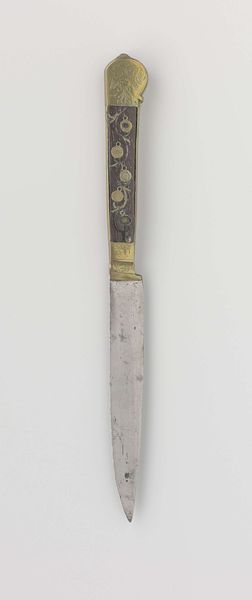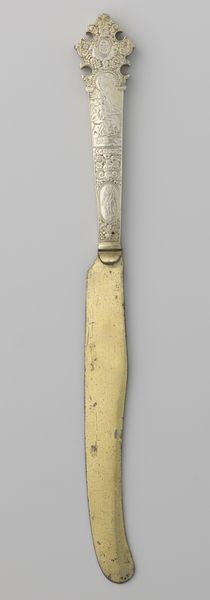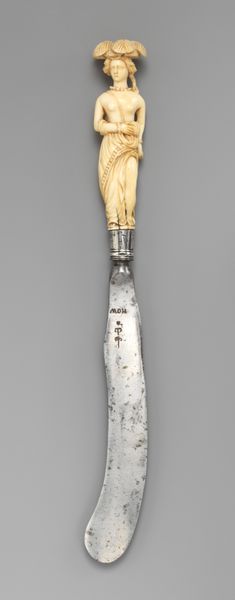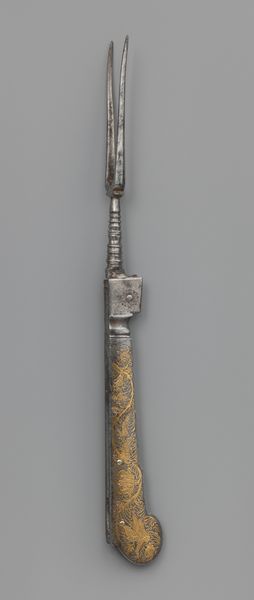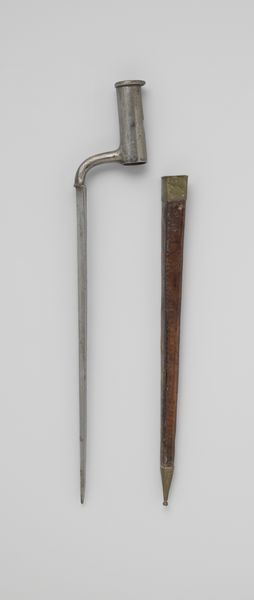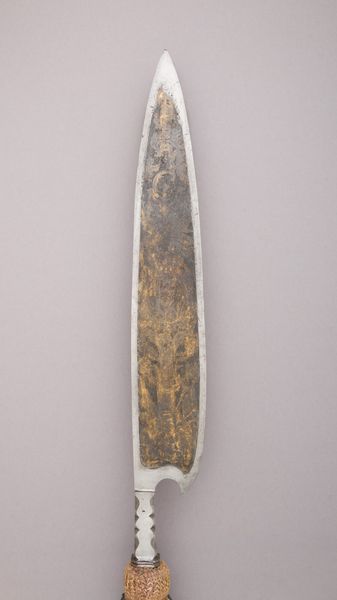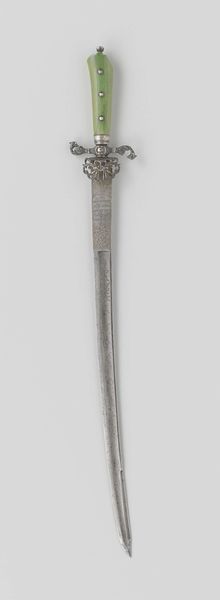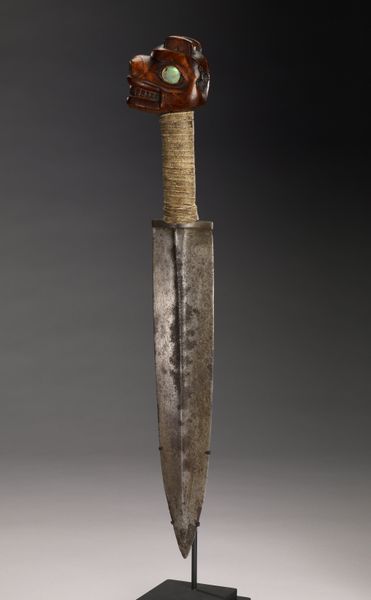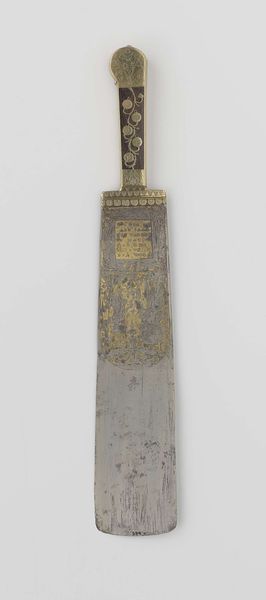
Dimensions: Length: 8 7/8 in. (22.5 cm)
Copyright: Public Domain
Editor: Here we have "Knife," crafted between 1780 and 1790 by Jacob and Samuel Roberts. It’s made of silver and other metals, residing at the Metropolitan Museum of Art. There's an odd contrast between the very ornate, Rococo-style handle, and the obviously well-worn blade. What do you make of that contrast, and the piece in general? Curator: The contrast speaks volumes, doesn't it? The Rococo style, popular with the aristocracy, emphasizes ornamentation and elegance. However, the state of the blade hints at utility and widespread use. It prompts us to consider: who owned this? Was it initially a display of wealth, eventually becoming a tool for everyday use beyond the elite circles? The addition of a museum inventory number adds yet another layer of context. Editor: So, it went from possibly fancy, showy piece to something more practical and available for everyday use? Is that a common narrative? Curator: Quite possibly. Pieces like this also reflect the shifting socio-political landscape. Consider the late 18th century – societal structures were on the cusp of massive change, like the French Revolution, challenging the very foundations of aristocratic privilege. Possessions like this, initially symbols of status, could have easily transitioned into more functional, less conspicuously luxurious items. Editor: That makes sense. So, it's less about the object itself, and more about what the object represents in that time of upheaval? Curator: Precisely. The ‘Knife’ becomes a fascinating case study of social history, reflecting changing values and power dynamics. It’s not just about art, it’s about people and societies in transition. Editor: Wow, I hadn't thought of it that way. Now I see it as more than just a pretty, old knife. Curator: And that is how objects unlock stories, connecting us to the past and provoking thoughtful reflection on the present.
Comments
No comments
Be the first to comment and join the conversation on the ultimate creative platform.

